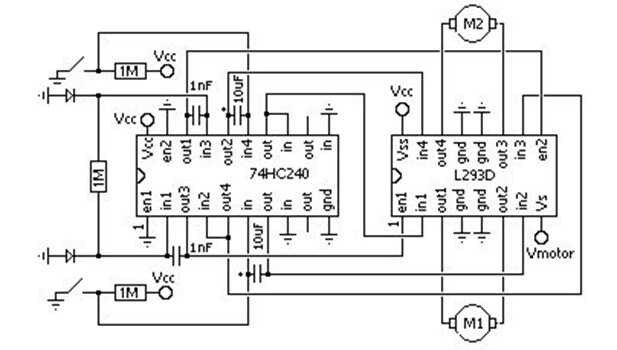If finding the perfect spot to place a potted plant to ensure it gets the maximum amount of sunlight throughout the day is proving difficult, then the Plant Host Drone (PHD) is here to help. Developed by Belgian sculptor Stephen Verstraete, the PHD is a wheeled robotic pot plant holder that seeks out the sun to keep the plant soaking up the rays as the sun moves across the sky over the course of the day.
Verstraete is a recent graduate of Sint Lucas Art Academy in Ghent where he attained a master’s degree in sculpting. The PHD is the result of efforts to research electricity as an artistic medium, but his creation has practical applications beyond the purely artistic.
Built using off-the-shelf components and the RP5 tank-tread robotic platform, the PHD can detect and move towards areas of higher light intensity, gradually moving slower and slower as it approaches the sweet spot of direct sunlight where it will come to a stop. When the sun moves and shadows encroach on its position, it will set out again to ensure the plant remains in direct sunlight throughout the day. The unit also packs collision switches to keep it from getting stuck when encountering walls and furniture.

Verstraete has posted the list of materials used to build the PHD and its electrical schematic online but, for the less electronically inclined, he has also revealed plans to produce a DIY kit to make it easy for anyone to build their own PHD. The kit would include everything needed to build a PHD with Verstraete aiming for a price under €25 (approx. US$32). He hopes to offer different body designs to accommodate different sized pots as an option and would encourage people to customize their own PHDs.
Because making the PHD solar-powered would make the PHD too expensive, the current model’s electric motors are battery-powered. However, Verstraete is considering producing an optional solar kit that would allow the robot to be powered by the sun. He is also considering adding a water container that would automatically water the plant.
Here’s a list of the components Verstraete used to put the PHD together, along with the electrical schematic.
- 1x 74HC240
- 1x L293D
- 3x 1M resistors
- 2x 1nF capacitors
- 2x 10uF capacitors
- 2x SFH 300 photo transistor
- 2x collision switches
- 1x pot to host the plant (make sure it doesn’t leak water into the electronics)
- and last but not least a recycled toy with 2 electric motors that runs at about 6volt or identical motors and wheels or a 2 motor robot platform

The video below shows Verstraete conducting some early testing of his PHD.
Source: Stephen Verstraete, Instructables via Treehugger









